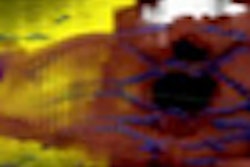Multilumen balloon catheters offer dosimetric advantages over single-lumen balloon catheters used to deliver accelerated partial-breast irradiation (APBI), according to the results of a clinical trial published online September 7 in Brachytherapy. Because of this, APBI may be more applicable for a larger number of women as a treatment for early-stage breast cancer.
Radiation oncologists at the Cancer Center of Irvine, a private cancer treatment center in Irvine, CA, conducted a clinical trial in which 182 early-stage breast cancer patients were treated with postlumpectomy brachytherapy using a Contura (SenoRx, Irvine, CA) multilumen catheter (45 patients) or a MammoSite (Hologic, Bedford, MA) single-lumen catheter (137 patients).
The primary objectives of the study were to determine the frequency with which a multilumen catheter could avoid a radiation hot spot in the skin and provide tissue-balloon conformance relative to a single-lumen catheter, as well as analyze acute toxicity for each.
In 2002, MammoSite single-lumen catheters were the first brachytherapy balloon catheters to receive U.S. Food and Drug Administration (FDA) 510(k) clearance for the treatment of early-stage breast cancer. Their use is recommended for balloon-to-skin spacing equal to or greater than 7 mm, because spacing of only 5-6 mm may deliver up to 145% of the prescribed dose, resulting in skin toxicity and poor cosmesis. Because the design of a single-lumen catheter does not include any means to remove an air/fluid pocket, it may need to be explanted (removed) if one develops.
Contura multilumen catheters received FDA 510(k) clearance in May 2007. The device's six-lumen design enables radiation oncologists to select five lumens in which to deliver radiation dose; lumens located less than 7 mm from the skin are not loaded with a radioactive source. A sixth lumen functions as a vacuum port through which air and fluid can be removed, giving the multilumen catheter design the potential to improve tissue-balloon conformance.
The patient cohort of this clinical study consisted of breast cancer patients receiving breast brachytherapy between February 2003 and March 2009. The oncologists did not begin to treat patients in the trial until mid-2007, after the Contura catheter received FDA clearance.
All patients had carcinomas of the breast at least 1 mm from the inked edge of the lumpectomy specimen. They were treated in the supine position with high-dose-rate iridium-192 brachytherapy, and less than 60% of the whole breast volume received 50% or more of the prescribed dose.
Surgeons placed the Contura and MammoSite catheters using a closed-cavity technique from zero to 68 days following lumpectomy. The minimum balloon-to-skin distance was less than 7 mm in 16% of Contura patients and 12% of MammoSite patients. The maximum skin dose was 100% of the prescribed dose with a Contura catheter and 145% of the prescribed dose with a MammoSite catheter.
For the dosimetric study portion of the trial, 45 patients who received breast brachytherapy treatment with a Contura catheter also had hypothetical MammoSite single-lumen-catheter treatment plans created using a CT scan of the breast before air/fluid removal. The treatment planning goals were to keep the maximum skin dose less than or equal to 100% of the prescribed dose and the volume of air/fluid next to the balloon less than or equal to 3.0% of the planning target volume for plan evaluation.
Eighty-nine percent of the Contura plans satisfied both treatment planning goals, whereas only 36% of the hypothetical MammoSite plans did, according to lead author and radiation oncologist Dr. Richard B. Wilder.
The Contura catheter provided important dosimetric advantages over a MammoSite catheter: Even though balloon-skin spacing was only 3-6 mm in 16% of the Contura patients, and 11% of the Contura patients had an air/fluid pocket greater than 10% of the planning target volume for plan evaluation, none of these catheters needed to be explanted.
MammoSite catheters, however, were explanted in 10% of cases where the minimum balloon-to-skin distance was less than 7 mm, and in 13% of cases where an air/fluid pocket developed that was greater than 10% of the planning target volume for plan evaluation.
Complications and acute toxicities were comparable for both patient groups, the authors reported:
|
In this study, patients who received MammoSite-delivered APBI had been followed for a median of 29 months (range, one month to more than five years), whereas patients who received Contura-delivered APBI had been followed for a median of only three months (range, one to 13 months). For this reason, the authors will continue to follow the entire patient cohort to determine if the dosimetric advantages of a multilumen catheter that were identified translate into a reduction in late toxicity, as well.
By Cynthia E. Keen
AuntMinnie.com staff writer
October 8, 2009
Related Reading
Study: Partial-breast irradiation is cost-effective, June 3, 2009
Single entry APBI offers flexibility in treating breast cancer, April 3, 2009
Study: APBI compares favorably to standard RT, October 1, 2008
Copyright © 2009 AuntMinnie.com



















